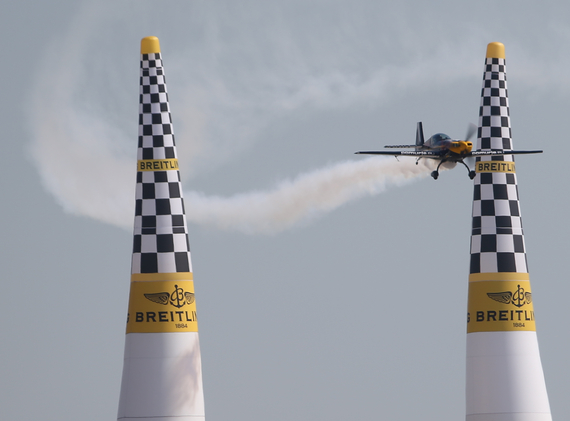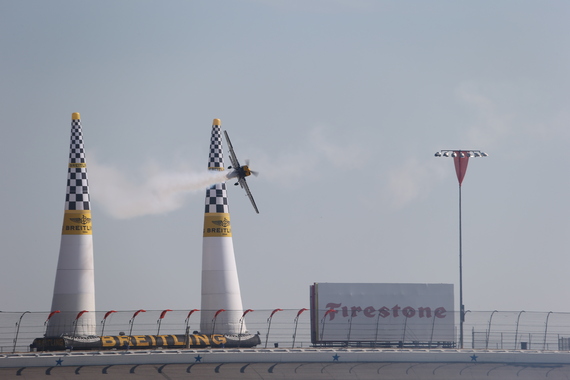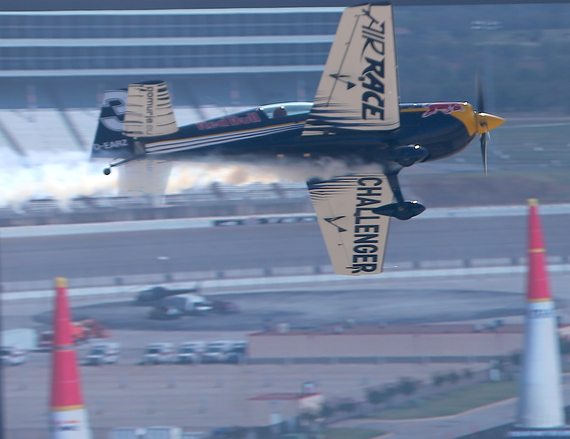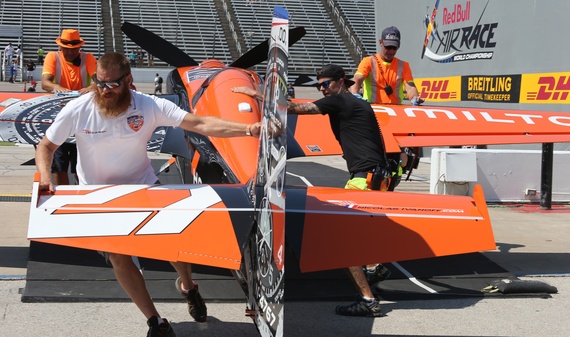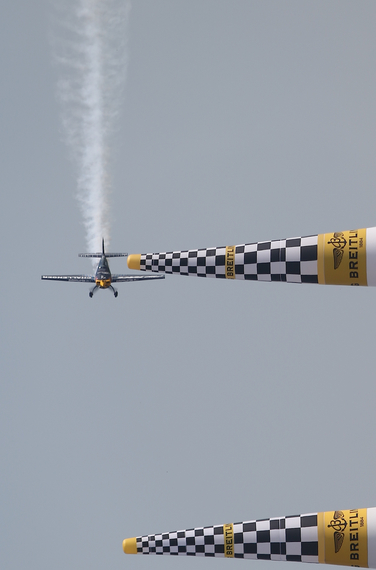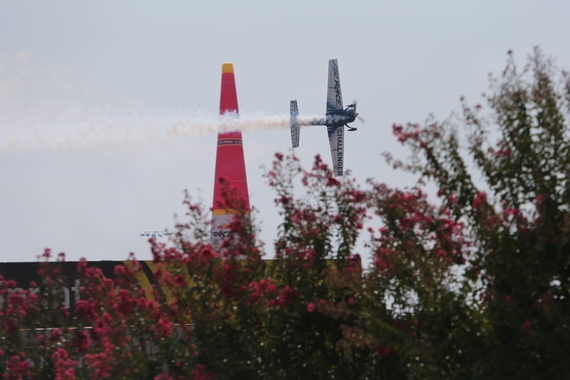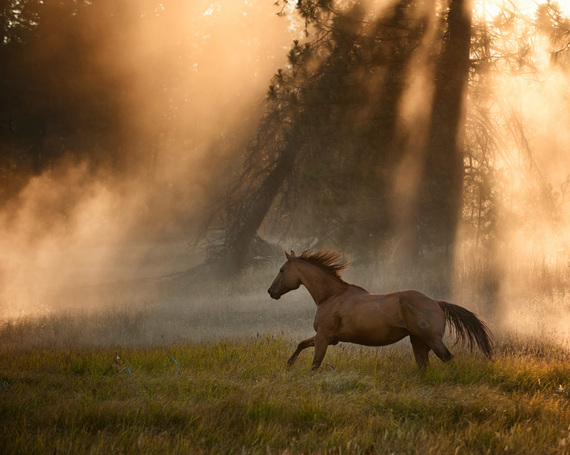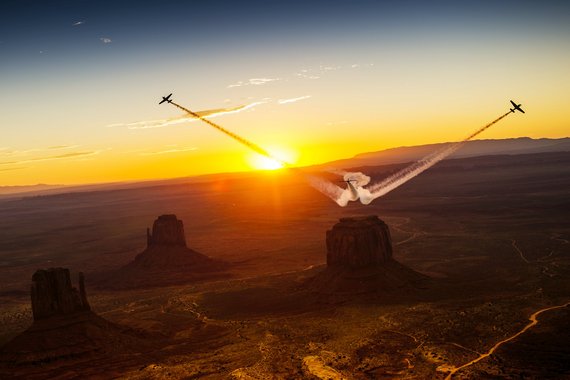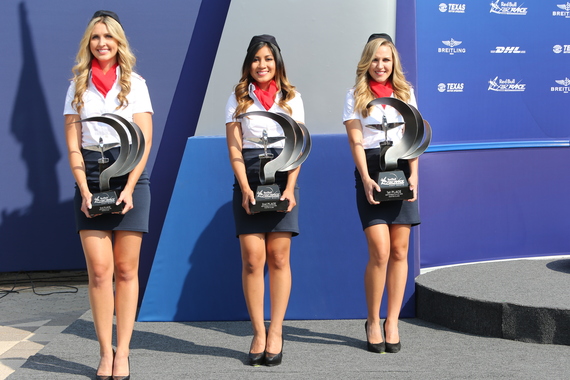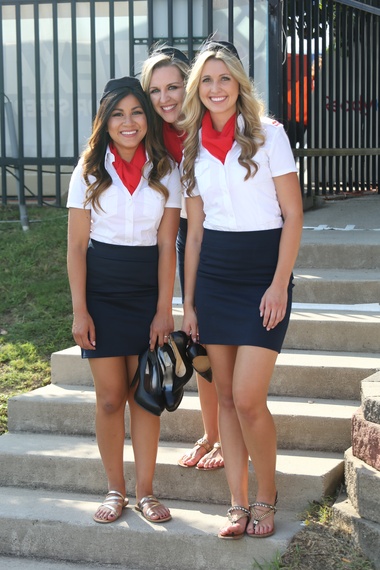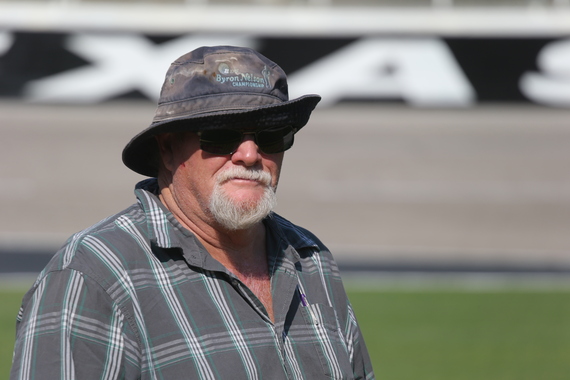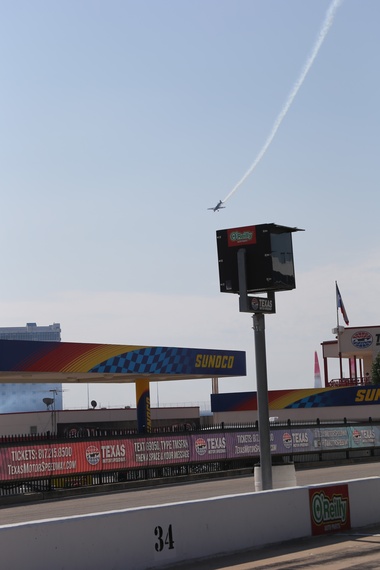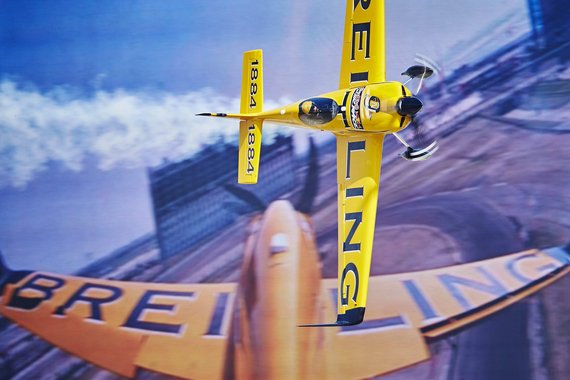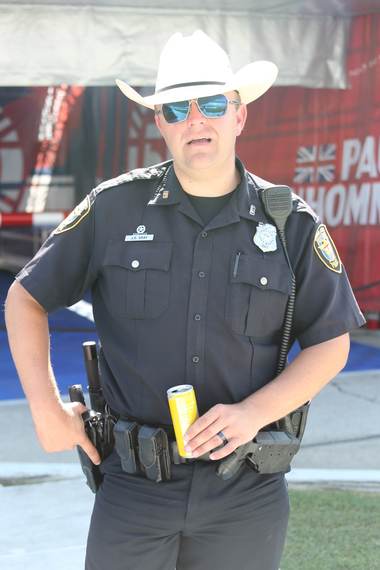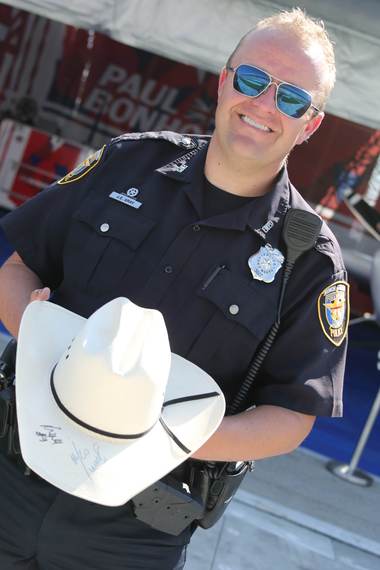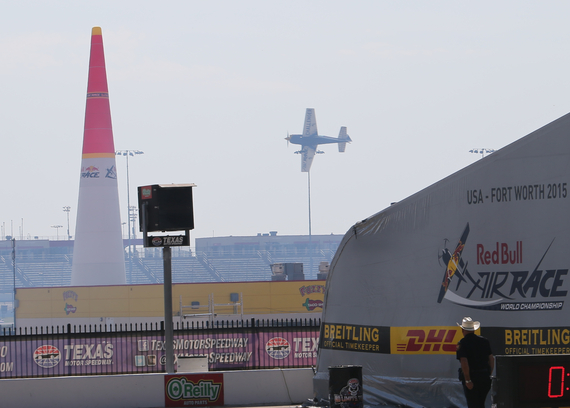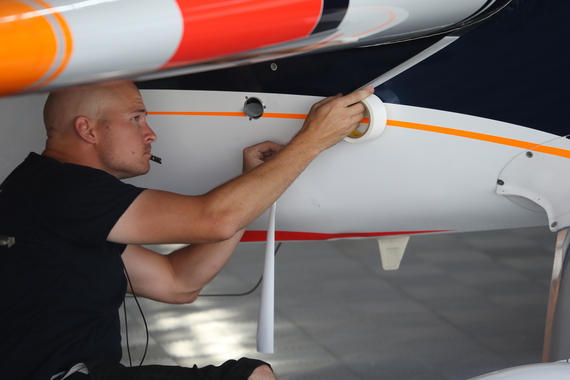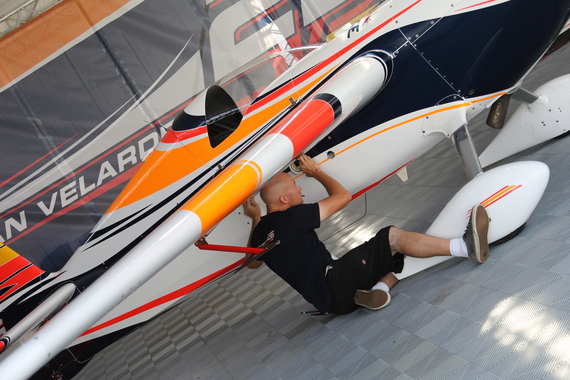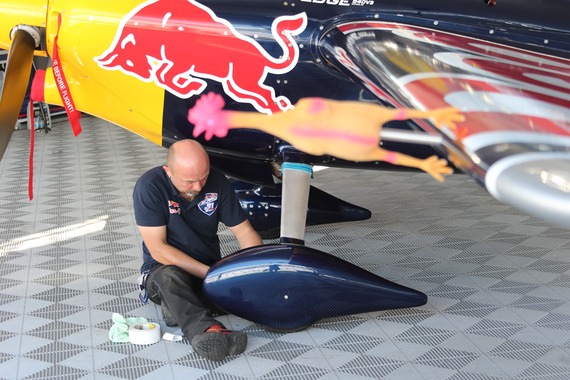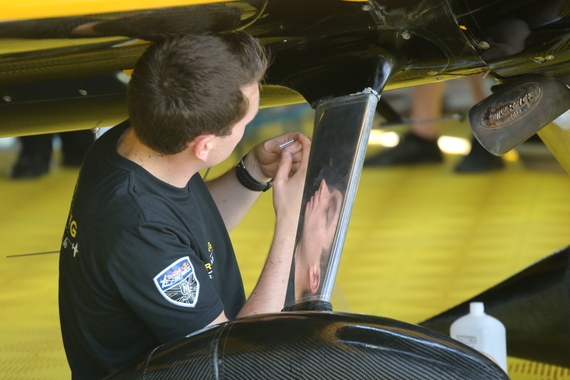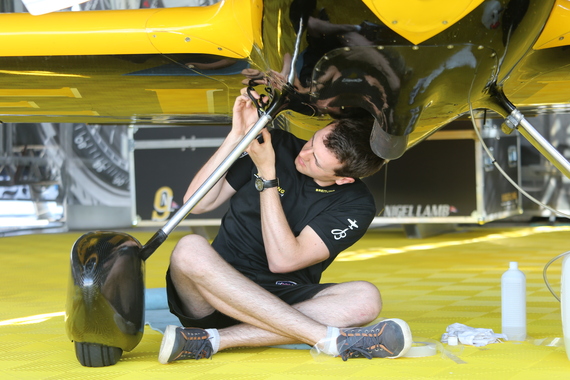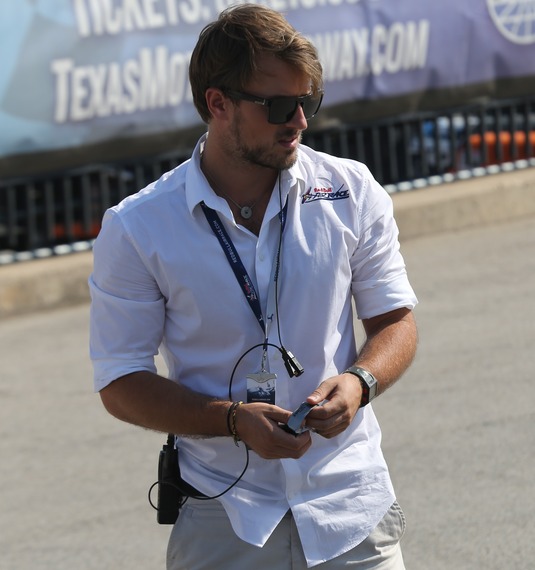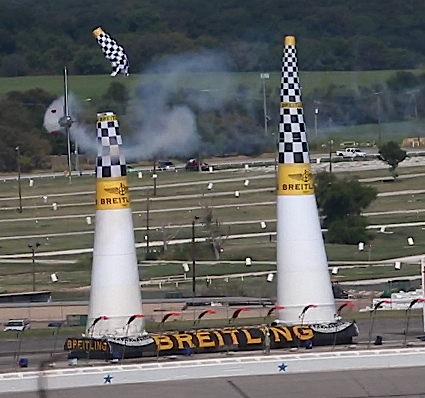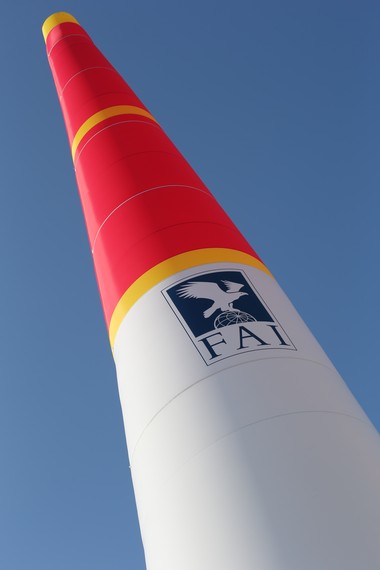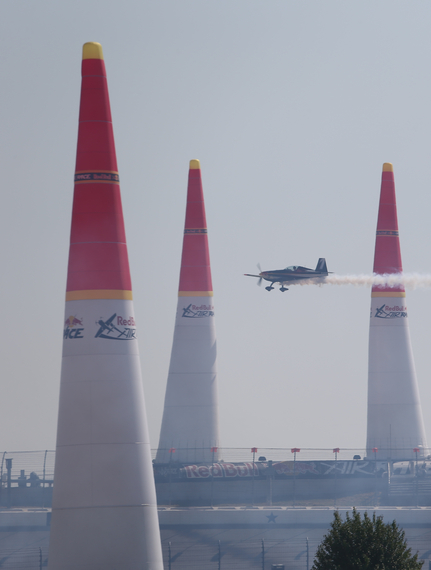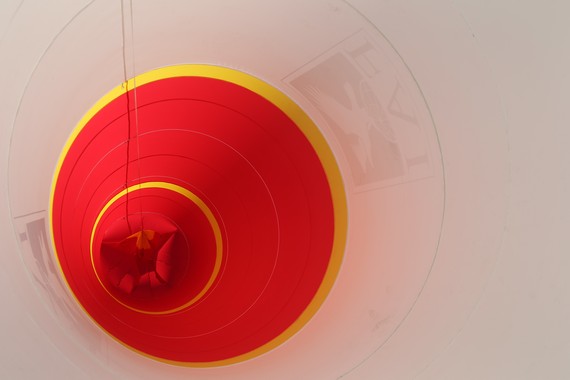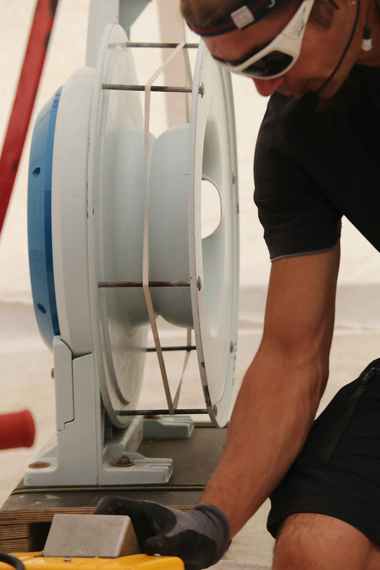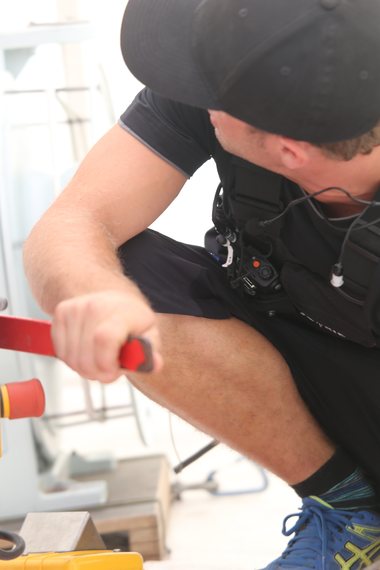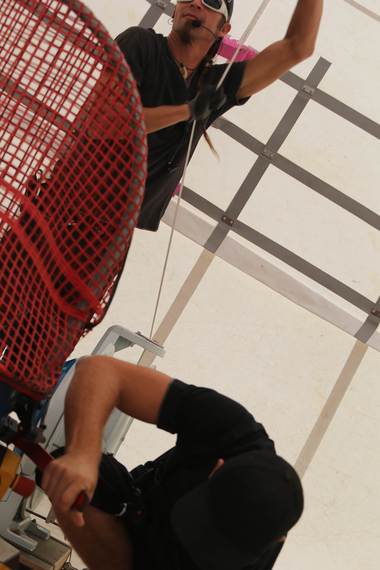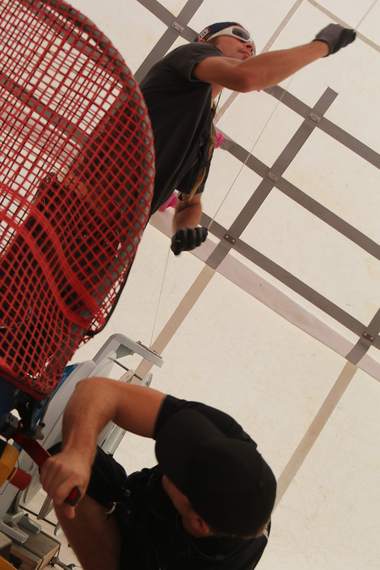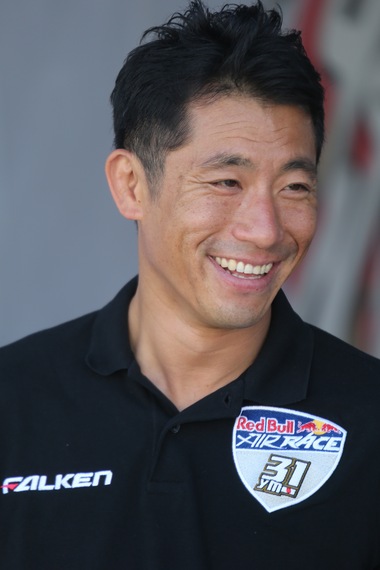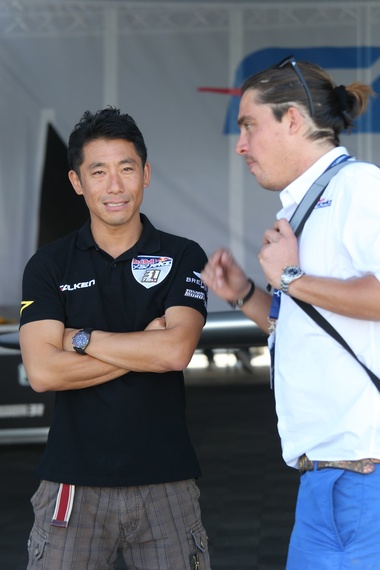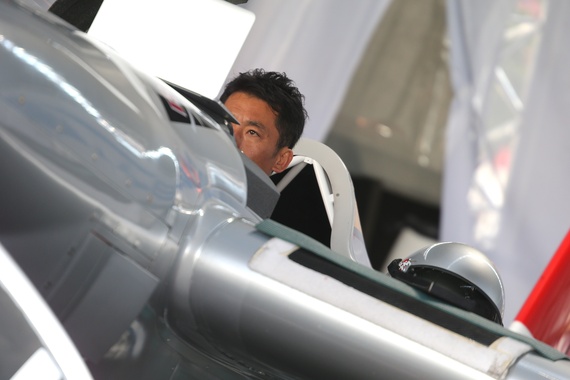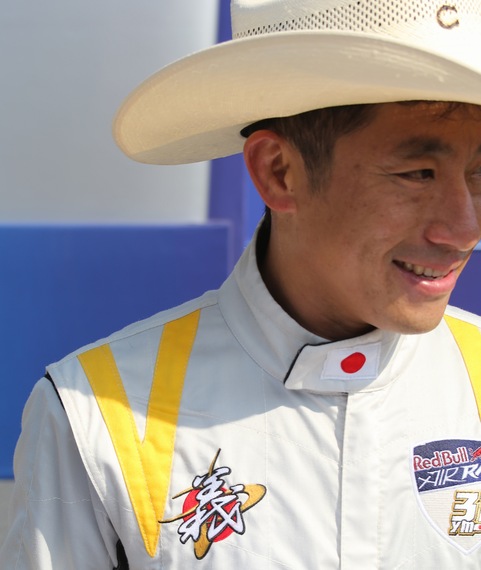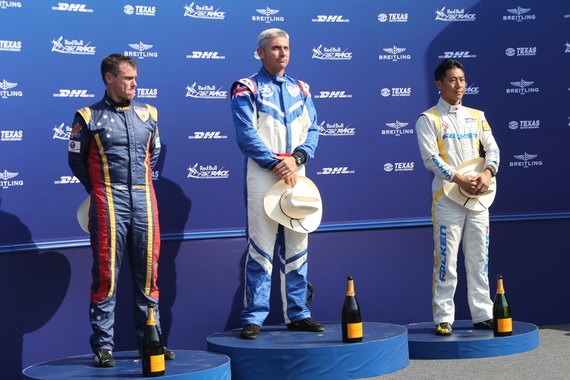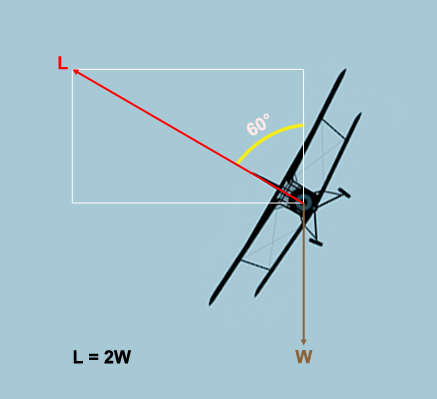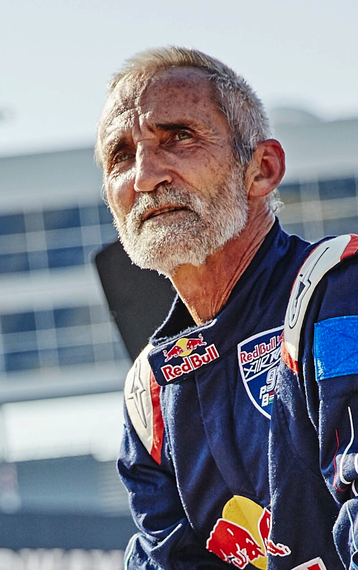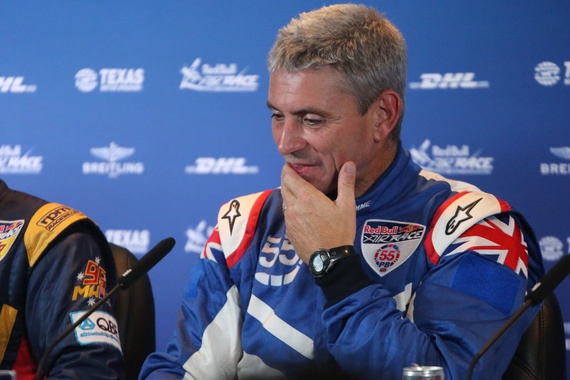Before this weekend's Air Race World Series livestream from 'Vegas, herewith, a primer; pilots' thoughts on possible scoring rules changes; a lottery-odds percentile story of a sole survivor; photos, videos...
Unless noted, ALL IMAGES C. 2015 Michael Vazquez ALL RIGHTS RESERVED
File under: notes and photos from the infield and atop the very roof of the Texas Motor Speedway.
A note on gear: Simply put, after two shoots (see "Festival Street Photography, Pt. 1" HERE) the Canon 1DX is the most near-perfect (read: perfect) camera for festivals and live sports that I've ever used. I've also just done a few portraits series, and this outdoor workhorse cleans up nicely. 'Going to train it to do relatively trad video in Vegas, specifically via a long cine-lens and, why not, a bokeh air-race video.
I was dumb to ditch the long lens -- in big ole' Texas of all places -- and to opt for only an ultra-compact zoom lens, which was 'great for candids and not-too-demanding action shots, but not for some shots already requiring a bigger lens than the 400mm I didn't bring.
Surprisingly, from this ultra-compact zoom, I like the painterliness -- even more astonishingly, in a 70s Photorealist vein -- to these shots. And so, though I managed, I absolutely needed a bigger lens...
...or I could have almost just as easily shot the Humongotron HD screen, which is the world's largest...
...and 78% larger than the screen at The Cowboys' stadium -- as track manager Eddie Gossage reminded me several times during our conversation, after I mentioned The Cowboys and was corrected about bragging rights...
Not everything was bigger in Texas; certainly not the 1,534 lb. carbon-fiber planes -- making them, what? More or less flying Formula 1 racers, give or take a dozen pounds? Both have wings. On a semi-related note, seeing Red Bull's F1 teams' re-evaluation of their participation in same, one naturally considers the standardization of engines in this air racing series...would that it were so simple in Formula 1 auto racing. I thought the consideration of building one's own engine wise and interesting, though it's always easy to make suggestions. Note: Although we equate Formula 1 with auto racing, there is also the Reno Air Race's Formula 1 Air Racing.
In air racing, obviously, the shortest distance between two points won't always be a straight line; indeed, the proverbial point is sometimes the one you just passed at a couple hundred mph and must do so again, in the opposite direction...
...it's perhaps during these climbs, turns, dives and more turns wherein the exactitude of heightened G Force on a human might enable said being to examine along the way, many of the theoretically infinite midpoints twixt any objects, including the dogged and tenuous mind-body connections, measured one nano-second spanning another, amidst the time-warp life-autonomy-slash-surrender which pilots know uniquely...
...in their compliance with the abhorrence of a vacuum, busying theirselves with creating near-right angles in nature where there are none, and other techno-existential aeronautic mind-machine-melds and meditations.
Interestingly, a meditation on a different kind of horsepower, from a photographer whose day job -- and frequent photographic vantage-point-as-subject -- is the harnessing of aerial horsepower, as a commercial pilot. Said shooter and captain of my flight to Dallas, Jon Pece introduced himself on line pre-trip, after overhearing me lament the absence of the 400mm lens. He actually opened up his bag and broke out his vintage film camera, then broke out a slideshow of his work, which I had to include a shot from, if I wanted to arrive in Dallas sometime that week. Just kidding.
Keeping it golden hour......this shot is from Joerg Mitter's ride-along with a few pilots who were given permission to fly over Navajo land.
Before we neutrophiles vicariously take to the near-sky again, a look at life on the ground: inside the course pylons, through the garages and hangars, to the winners' podium... herewith, shots of varied folks, all carrying forth the latest spirit-gust of a century-old aerial competitive tradition.
Air smiles rewards club.
Flat, lamé sandals are the apparent choice footwear for off-duty trophy presenters.
That hat's worth its salt...
Visiting Texas, I, earnest Easterner, seek a mythic America; for me the infield of the raceway evoked Ed Ruscha's Gas Stations.
My favorite shot, and not by me c. 2015 Andreas Langreiter
...this disorienting shot initially suggesting reality as secondary, provides a perfect photo of a TV screen -- because, of course, all photos of TV screens are perfect. Typing this back now, it all reads differently, two weeks after initially contemplating that giant screen for hours atop the roof of the speedway, amidst heat, fumes, and possibly too much energy drink.
Initially guarded (and over-exposed)...
...he warmed up when I asked if that hat was regulation; a few hours later, it would be, I hope, signed by all the pilots, which this officer had failed to accomplish last year.
Herewith a few shots of the moments between flight.
Planes, like athletes, require tape-jobs.
This crewmember incorporates Tai Chi in his job...
You've heard of cock 'n bull stories?
Why did the chicken fly across the road? It was stuck on the plane.
Returning to the skies, sort of...
The initial instances of pylon hits bring to mind both the unspeakably disastrous to the near-comical...these literally and figuratively, well, deflating instances satisfy, in a have-your-cake-and-eat-it-too way, any (what? Freudian? Speilreinian?) primal death-wish plane crash spectacle-hopes, via the death-cheat we get with every destruction of a pylon. Fascinatingly, these were once made of wood in the last century; a time when ironically, there were more female-piloted air events than there are now.
This spectacle of day-glorange, yellow, and a giant checkerboard banding seemingly straight out of a fairy tale -- or, more likely, a theme-park for movie version of same -- makes this speedway kinda like an over-oversized kid's romper room, bounce castle.
When pylons are hit -- at appx $15K per 'lon -- into action go the "Airgators", air racing's stealthy equivalent of the pit-stop crew. Operating inside the cone at zero gravity, these micro-space station repairmen risk being shot 70 feet into the sky at over 50 M.P.H. Just kidding.
For Airgators, the challenge isn't to change four tires in seconds flat, but to rebuild a component of a racecourse that measures space and time in relation to competitive aircrafts' height eligibilities, within millimeters and milliseconds.
Dually simple and precise, these giant candy corns in the near-sky are comprised of modules attached by zippers, and inflated to a carefully monitored and maintained ratio, enabling the complete separation of any segment upon the lightest impact.
Of equal consequence as rapid re-inflation is the team's controlled quick deflation, as the cone-master explains, in anticipation of a complete course run wherein the plane would have to complete a second turn, at which a partially standing pylon could be a danger.
I spent part of race day in the hangar of Yoshihide Muroya; here are a few shots...
Having requested and filmed the pilot sharing his philosophy of life and aviation and similarities twixt same, I began to wonder if I didn't jinx him; he did survive two pylon hits to make the podium, taking third in Texas.
Seems many of the pilots I've queried on accepting risks have cited the far greater dangers of crossing the street, giving this proud jaywalking New Yorker pause.
Perhaps ultimately, his teams' philosophy is more easily understood in the dual attentions paid to laptop readouts and the course re-creation made of taped-to-the-ground cans.
Yoshi at the podium.
Matt Hall (left) and John Bonhomme (right) are the only two pilots with a shot at number one this weekend...
When the Aussie/Brit rivalry stuff runs its course...well, if it ever runs its course, suffice to say: there's also an intense piloting -- and strategy -- duel going on twixt these two.
The calm before the champagne storm, and the championship in Las Vegas. In the champagne wars of the podium, Bonhomme (center), who's been atop same more than any other pilot in this series history, was masterful in arming his bottle and having it at the ready to spray-on-command; having done so, he still found bubbly comeuppance from Matt Hall (left), who hid a reserve and went out of his way, post-scrum, to spray Bonhomme, who he trails by just enough points to dually hope for his own stellar, career-defining performance and also a required totally epic, well, fail from the Brit, in order to steal first place. Suffice to say, the championship -- and champagne -- showdown in Vegas will be interesting.
Of Mods & Clockers; Standard Engines, Props & A Call For New Scorekeeping?
When the Air Racing World Series announced a few years ago that all crews would henceforth work from a standard propeller and engine in the service of uniformity throughout all hangars, new "mods" (modifications) and innovations, like water, sough their own level in this new paradigm of design challenge.
Such efforts have over time yielded varying effects on performance for enterprising teams, while others claim to eschew many modifications. Though vegetarian I be, I'll note that there does seem there's be what I'll casually call the "KFC effect" meaning a proliferation of winglets.
And while at the end of the day, all agree that it always comes down to the pilot athleting -- or the athlete piloting -- the craft, the mods will keep coming and playing out and maybe, through some designs, shape the sport's history.
A few weeks before this air race, I spoke on the phone with Peter Besenyei, the test-pilot-slash-co-architect of this air race series, from its racecourses through its pylons, to some -- not all, as I learn in this interview -- of the rules.
Peter Besenyei, creator of the Air Race World Series racecourse
As is well-known to the aficionados (present company excluded) of this motor sport, the annual testing and modification of the pylons is a QC process largely overseen by Peter Bensenyei since the inaugural races, which began in earnest only after two years of work by this test-pilot, per the well documented history of air races, hence his warmly-conferred title in print of "Godfather" of contemporary air racing (the "Godfather" title is, in essence, well, disliked by Besenyei, per one insider's introductory note to me.) Perhaps less well-known of Besenyei is the aforementioned freakishly (yet also quite human-scale) lottery-odds-percentile experience early in the life of the pilot-to-be, which afforded him a rare insight on luck and fate.
MV: You were the only person from the Hungarian National Air Guard who didn't get on an airplane that tragically crashed; how did that impact your perspective of life and risk and time?
Peter Besenyei: I was only, only, only, team member not in the plane, and I wanted to be on the team, but he won't let me, the actual commander; at the airport, he didn't let me go - without doing it on purpose, he saved my life.
Of course, I couldn't say 'Thank you,' because it wasn't on purpose - he didn't want to give me something good, but anyway, this was a very hard time for me, because all my friend's, all my team were in one second away worst I ever had, worst for friends for my family...in five seconds I lost all my friends, all my team; I had to start again, after a couple of months, because for a period of months, I didn't go to the airport.
MV long question about what he believes he learned...
What I learned? What I learned. Yeah, it's hard to say. You are living towards the end of your life and uh, I would say: in my life, several times happened, the situation where I wanted to do something, I wanted to have something, really; I went, I went, I was all for it, and I made all my effort to get it, and somehow, I couldn't, I couldn't.
I was disappointed, and then, after a while, after a few years, I just realized: Oh shit, that was good; that was much better [than] if I was [lucky earlier]. So it happened several times in my life that I wanted to do something, really, and I was disappointed [at first].
We continue a longer conversation about small fast planes in the present day versus a pre-computer paradigm, and I will post it at another time.
Additionally well-known to fans of the sport is the scoring system, and I also asked of Besenyei his thoughts on the structure, and despite -- or perhaps more likely, in full respect to -- his critical role in this league's evolution, he is also forthrightly, well, critical about the apparently long discussed, perhaps still-evolving rules and regulations of the scoring structure governing the competition, which is now officially certified by the Fédération Aéronautique Internationale (FAI).
A priori delivering a detailed analysis, Besenyie qualifies it all with a unanimous dissent roll-call, noting firstly in the conversation: "It's not only me and Paul [Bonhomme, who I mention to Besenyei that I've spoken to]; fourteen pilots, fourteen teams, 'hundred-percent of the tour since the beginning of this format [have opposed it].
It's not sporting, it's not fair, it's a very, very stupid...and the spectators don't understand sometimes why sometimes the pilot can go forward without [being required to have the fastest] time, and why the pilots can be in [the finals] with a slower time, while the pilot with the faster time is out."
I ask him what single thing he'd change immediately, one which would have the biggest impact:
"The head-to-head format, which is against the basic idea to make a objective sport based on [fastest] time. The head-to-head format, because it's not simply based on time, but it's based on luck: who is your partner? So, I would prefer to fly against everybody."
Earlier, during a telephone conversation with Paul Bonhomme, before I could ask a question, the first thing the competition's winningest pilot told me when he came to the phone was that he felt great, having just re-created the Battle of Britain. Around this time, there are several tragedies in different unrelated air events, and I ask Bonhomme the different rewards and calculus involved in tandem flying versus competitive racing.
"Flying in formation with somebody, it's the ultimate game of trust and the only reason Steven [Jones] and I did the barnstorming video was because we've flown together for eighteen years now, doing formation aviation displays; he's never flagged me and I'm pretty confident I've never flagged him. We've had better and worse days in the office.
We know this: we're never gonna master it; it's one of those things that you're never gonna get perfect and this makes us then realize you're never gonna be perfect and you've got to always be watching out for traps, you can't be over-confident; the minute someone says they've cracked it, watch out. And that's the only reason Steve and I fly, because we have the utmost trust in each other."
When I ask about the structure of air races, he reiterates the premise of the competition, delivers a primer on the rules, and outlines the pilots' suggestions for scoring changes:
"Basically, you're trying to fly the racetrack as quickly as you can; that's the essence of it, just speed trials.
So, what we have is the race, which ends in two days. There's qualifying on Saturday. On qualifying day, you all have two runs through the track, and the best of those two runs is taken as a preliminary qualifying item. And then on race day, you take the qualifying ride and you have seven head-to-head [competitions], so #1 versus #14, #2 versus #13 and so on and so forth. And you get -- are you with me so far?
So, that's fine -- and they do that lovely -- and it makes perfect sense, because the fastest guy goes against the slowest guy, which makes perfect sense, in theory.
What happens in the actual practice is: if a really quick guy -- let's say last year's world champion, or one of the guys that's really, really consistently putting in good times; if he has, say, an off day on Saturday, let's just say he screws it up. Not tenth or eleventh or twelfth [place] -- let's just, for the sake of argument, keep it simple, and say he comes in last.
Uhm, he then qualifies fourteenth. and the guy that qualifies first, pulled his act together, brilliant teamwork, everybody's happy -- for all of that effort, you then meet another super-fast guy, who just happened to make a mistake on Saturday.
So, all fourteen of us have asked that it be changed on a number of occasions. They [the pilots] are just very dissatisfied with the roll of the dice, luck."
MV: What did you hear when you mentioned it to them?
"We have been told that it makes for better TV...Now, if you had seven head-to-heads, you're gonna end up with a couple of head-to-heads that are really slow, when both guys finished 1:10 something, but one of them gets through (to the finals) whereas a lot of guys who did 1:07 and the like, they get knocked out of the competition. And so, once again you've knocked out two quick guys, and two slow guys go through.
Then [there's] the issue with the guy who qualifies first meets the fastest loser. And definitely, the fastest loser is gonna be pretty damn quick; and so, if you qualify first, not only do you run the risk of meeting someone who had a bad Saturday -- you then meet the fastest loser, so it's a double-whammy."
You then say to yourself: what the hell did I do all that work to bother to qualify first [for]? And then on some race days you have other dramas like, out of the seven head-to-head, you might have, as we saw in my first head-to-head with Hannes Arch; each of us is flying 1:06 and one of us was gonna get [knocked] out -- except for the fastest loser, which is the only bit of common sense: it means the guy who is the fastest loser [makes it to the next round]. But then I had to race Hannes [Arch] and I think I'd qualified first and [I ended up] having to race super-quick quys twice in a row.
So we said to the organization: look guys, why can't we have: yeah, qualifying on a Saturday is good, because then if you get weathered-out on Sunday you've still got results for qualifying. But on race day, take the fourteen; you all fly; and then you take the fastest eight, and then you take the fastest four to the final."
Extra-credit viewing: for National Aviation Day, I queried pilots for anecdotes of pivotal life moments, dubbed over this race course video...
On Sunday, October 18th at 5PM you can watch the (long overdue) U.S. live webcast of an air race HERE. One hopes that in 2016, geo-blocking of global sports events will be a thing of the past.


